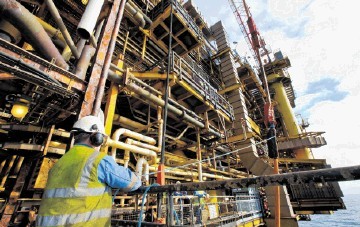
When the first offshore workers started producing oil on Kittiwake in 1990 they could not have expected their successors to still be on the platform more than 20 years later.
Even in 2003, when previous owner Shell Expro sold the installation to Venture Production, Kittiwake was supposedly just two years away from being abandoned, having fulfilled its useful life.
That could not be further from the truth – like so many other UK North Sea assets, Kittiwake is still going strong after being revived by its new operators. When Venture was sold to Centrica in 2009, the Scottish Gas owner set about upgrading Kittiwake to the point where it is now in rude health.
When it left Shell’s hands, the platform was producing just 4,000 barrels of oil (boe) per day. The installation, which is 100 miles east of Aberdeen, is now capable of 27,000 boe per day and averages 15,000, having produced 38million barrels since 2003.
Ownership of Kittiwake is split 50-50 between Centrica and Dana Petroleum. Operations are overseen by energy service firm Petrofac, which won the contract with Venture and has held it ever since.
David Wilson, Centrica Energy’s regional director for the central and northern North Sea, said multimillion-pound investment in Kittiwake had made extending its life possible.
He added: “We loaded the oil on to a tanker until 2007, which meant bad weather had a big impact on maintaining production.”
A £70million investment in a 20-mile export pipeline linking Kittiwake to the nearby Forties pipeline system has ironed out the platform’s production issues.
“We had 136 days of uninterrupted production last year, so our exports have become much more steady,” said Mr Wilson. Despite the platform’s jump in output, Kittiwake is still a relatively small installation – it can accommodate only 77 people and averages just over 70 workers who are there for two weeks at a time.
While offshore they are led by Mal Hunter, one of Kittiwake’s offshore installation managers, who after 40 years in the business said he had not lost any passion for the offshore sector.
“I have been in the industry since I was 18 years old and am still as enthusiastic as I was the day I started,” Mr Hunter said, adding: “It is still a very buoyant, exciting and changing industry and you cannot help but develop an affinity to it.”
Mr Hunter said the atmosphere on Kittiwake also kept him coming back.
He added: “There is a real community feel on the platform and there are lots of people who have been working here for a long time.
“The good atmosphere is not just because it’s a relatively small installation – I have worked on both large and small assets, and it’s down to the management team both offshore and onshore to get the work ethic just right.”
Mr Wilson said he believed there was still more to come from Kittiwake and its surrounding fields, meaning workers would still be flying out to the platform years from now. The Greater Kittiwake Area (GKA) also includes the Mallard, Gadwall, Goosander and Grouse fields.
Current wells running through Kittiwake would keep the platform in business until 2017, said Mr Wilson, adding: “If we can add new wells and new fields it has the potential to go on longer.
“There are about 10 potential exploration prospects nearby, which could extend the life of Kittiwake beyond 2020.”
The latest production well in GKA was drilled as recently as last year, and Mr Wilson said he did not think it would be the last.
“New technology, particularly in seismic exploration, takes some of the risk out of drilling wells, which means we are more likely to proceed,” he added.